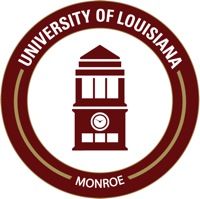Below is a summary of the abstract you submitted. Presenting author(s) is shown in bold.
If any changes need to be made, you can modify the abstract or change the authors.
You can also download a .docx version of this abstract.
If there are any problems, please email Dan at dar78@pitt.edu and he'll take care of them!
This abstract was last modified on May 9, 2016 at 1:15 p.m..

Seven Rhodococcus erythropolis CA cluster phages and a single Rhodococcus erythropolis CB cluster phage were isolated from soil samples from northeast Louisiana and Tennessee. The CA phages range from 46,314 – 46,962 bp in length, have a GC content of 58.7 – 58.8, and contain three tRNA coding gene products. As in all CA phages, the left-hand side of the genome is predominantly read from the + strand and represents many structural proteins, while the right-hand side of the genome is largely coded for by the – strand. The S-integrase, read from the – strand, represents the turnover from + to - strand reading frames. Phamerator comparison of these newly sequenced Rhodcoccus CA phages indicates that all seven ULM isolates share a considerable degree of sequence homology with previous isolates. As a group, the CA cluster phages exhibit many gene products shared only by members of their own cluster. These ORFs code for both hypothetical proteins and known functional proteins and include: tapemeasure protein (pham 7927); holin (pham 15679); tail assembly chaperone (pham 17312); and lysin (pham 4336). There are also a significant number of functional gene products which CA phages share with members of a wide variety of A subcluster Mycobacteriophages (subclusters A2, A3, A4, A7, and A10). These gene products include: DNA polymerase I (pham 15909); DNA primase (pham 4038); helicase (pham 5065); excisionase (pham 2018); S-integrase (pham 14585), deaminase (pham 19153), capsid (pham 3146), terminase (pham 19186), and the immunity repressor (pham 19997). The Rhodococcus erythropolis phage Measels has a genome length of 134,973 bp and a GC content of 41.3. While Measels has been assigned to the CB cluster along with Rhodococcus phages Grayson and Peregrin, there are significant differences between Measels and the other CB cluster members as seen in their Phamerator comparison. In addition, Measels was found to share some gene products with the Streptomyces phage Jay2Jay.
